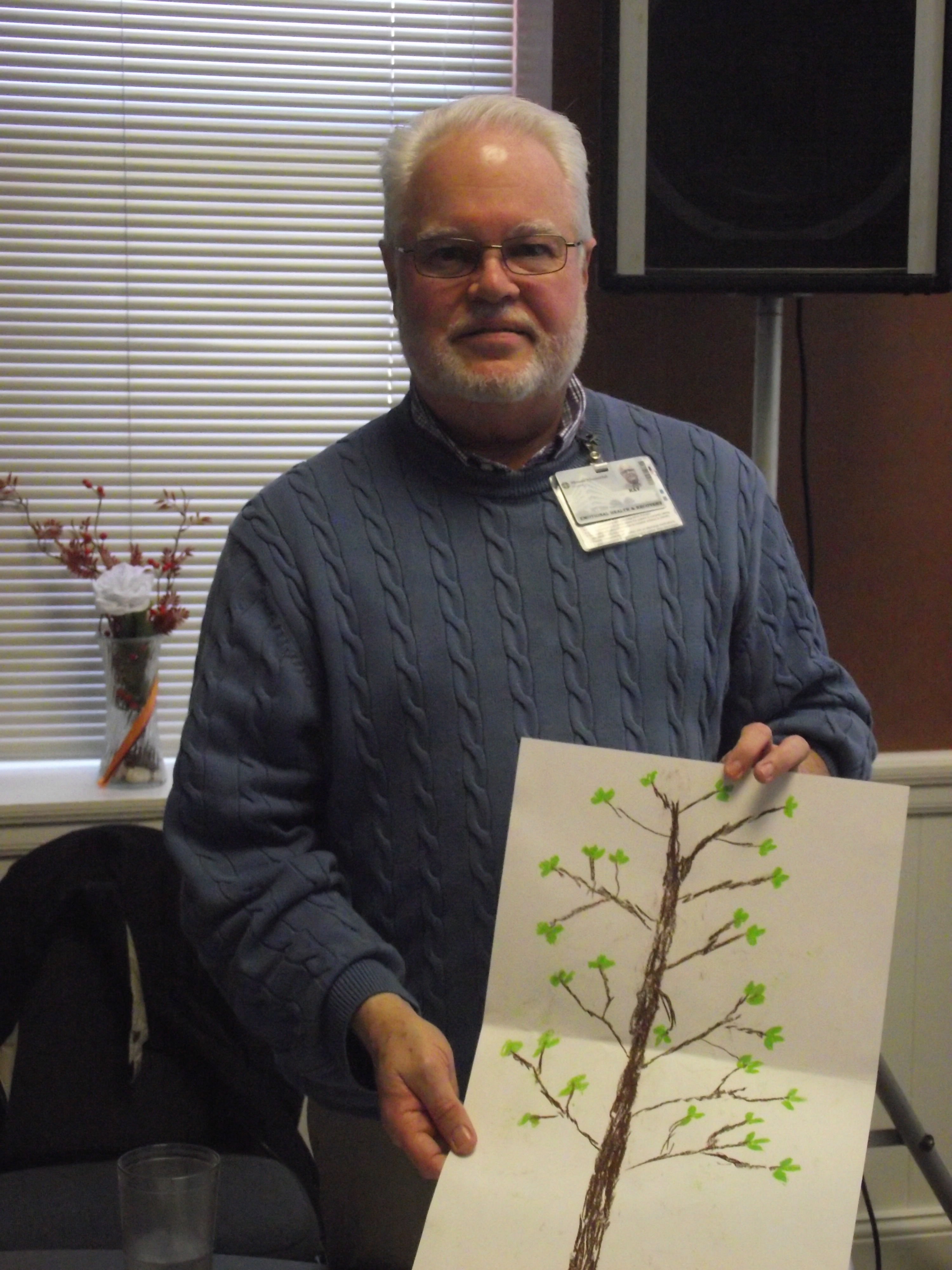Art therapist speaks to MC students

Ray Evette, an art therapist at Blount Memorial Hospital, came to speak to MC students in the Profit Dining Room Wednesday, March 6, at 12:30 p.m. Evette has been an art therapist for 20 years at Blount Memorial, and he spoke about the basics of the field.
Art therapy has been around since the 1960s, and according to Evette, people usually react to the practice in one of two ways. Sometimes patients are excited to take part in this different kind of therapy. Other times Evette is met with disbelief and even anger.
Despite this, Evette still pursues his field enthusiastically.
“It’s a different way for people to deal with their feelings, rather than talking about them,” Evette said.
Art therapy is a non-confrontational method of facing strong emotions, and it is being used in treatment programs worldwide more and more. By being able to create art instead of simply talking about an issue, the patient is able to face his or her problem without confronting it head on, which can often be difficult or uncomfortable.
One benefit of this kind of therapy is being able to see visible proof of the emotions on paper that cannot be ignored or denied. With this “proof” the issue is more easily faced.
“[Art therapy] helps people get out of their heads [and] do something different,” Evette said.
Once the art is completed, Evette analyzes the artwork and generates options for the patient to discuss. For example, if a patient uses a lot of blue in a piece, Evette may ask if he or she is feeling sad or calm and peaceful.
Evette also looks at numbers in artwork. The number three, according to Evette, means new beginnings; thus, patients who incorporate three of the same objects into a piece may be looking toward new beginnings.
Evette uses a variety of mediums for his therapy, including collage, paint and crayons. He says that no artistic skill is necessary for therapy, and half the battle is getting people to step away from the preconception that a person needs to be talented to do art.
While some art therapists feel that the art is the most important part of therapy, Evette maintains that the emotions which drive the art are more important.
“I’m more interested in the process rather than the product,” Evette said.
Once Evette knows what emotions fuel the person’s creativity, he can then begin the treatment.
The particular projects Evette uses in therapy are also rich in meaning.
Evette employs activities such as mask-making, in which the patient makes two masks. The first mask represents who the patient pretends to be, and the second mask represents who the patient is on the inside.
Another project he uses is a projective-bridge drawing. In this project patients are asked to draw where they were when therapy began and where they stand at the time of the drawing.
These projects, along with Evette’s expertise, allow him to gain insight into a patient’s emotional world.
Evette left MC to go back to his job, continuing to help patients every day. He is passionate about this endeavor and maintains that art therapy is extremely helpful to address emotional issues.

